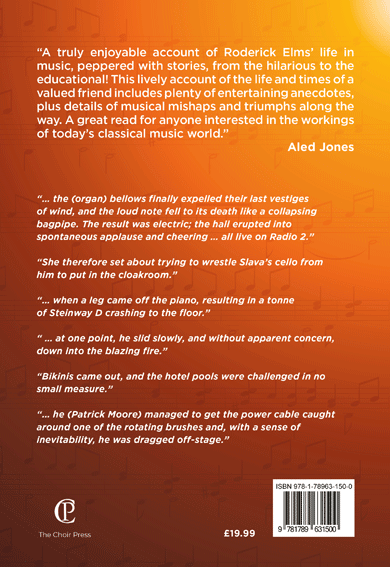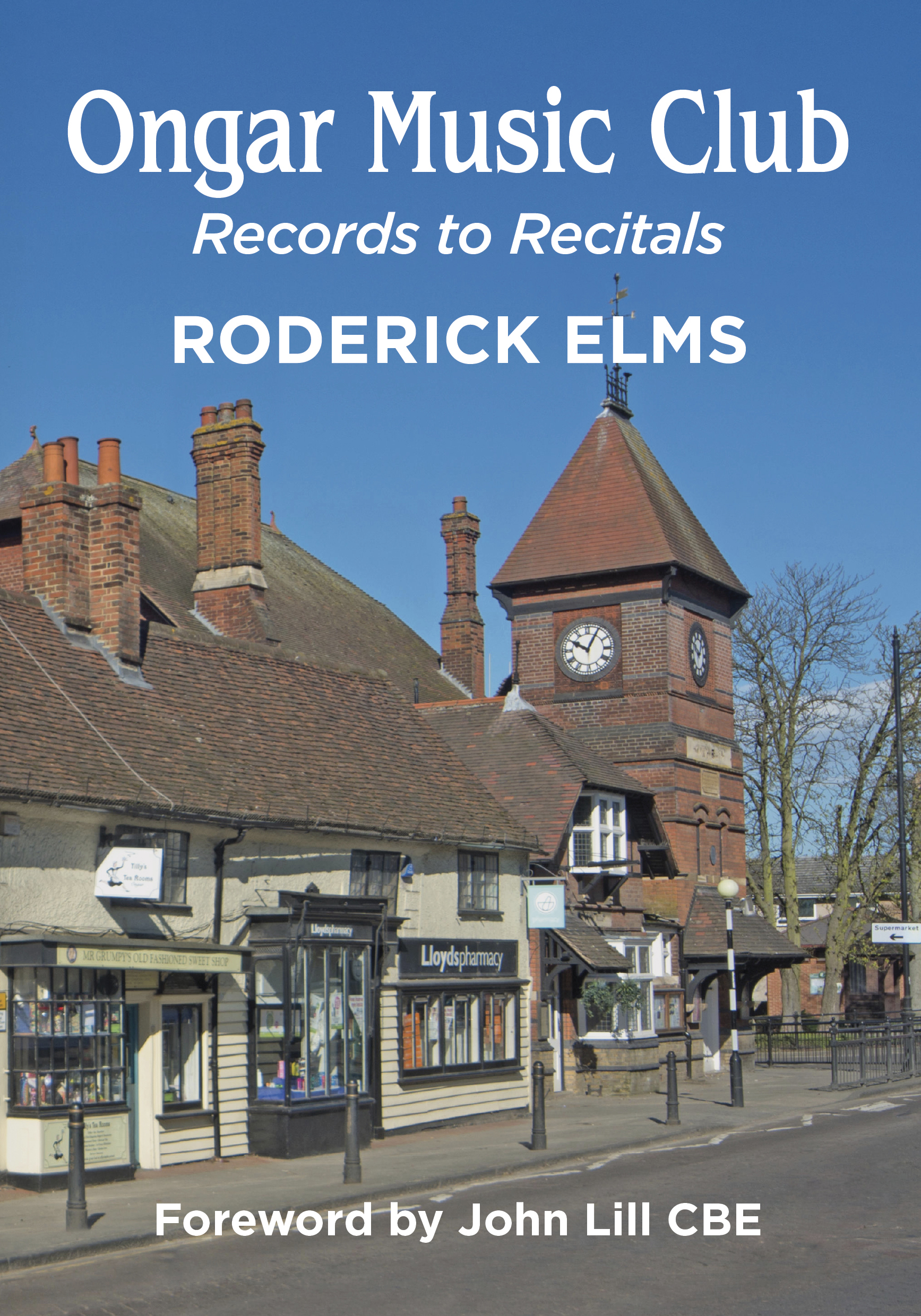Just a Little From the Top
Available from this site at the introductory price of £13.95


Roderick Elms: Just a Little From the Top
Introduction by Aled Jones
“A truly enjoyable account of Roderick Elms’ life in music, peppered with stories, from the hilarious to the educational! This lively account of the life and times of a valued friend includes plenty of entertaining anecdotes, plus details of musical mishaps and triumphs along the way. A great read for anyone interested in the workings of today’s classical music world.”
Aled Jones
‘Just a Little From the Top’ chronicles Roderick Elms’ love of music from childhood, through school and college, ultimately leading to a career spanning more than forty years, in which he has worked at the highest levels of music-making in London.
It gives a unique insight into many aspects of the workings of the profession and contains a multitude of anecdotes, many humorous, about his fascinating life journey. These include occasions when things have gone wrong, sometimes as a result of practical or mechanical failures, others due to poor leadership.
A little early biographical information takes the reader through wonderful experiences, gained by many young people, from the musical opportunities bestowed by the Redbridge Music Service and its music advisor, Malcolm Bidgood OBE. It also takes a trip through some of the Redbridge-based musical groups, which played such a big part in the lives of young musicians living in that area in the late-sixties, seventies and eighties. Not least, the internationally unknown Gnaff Ensemble!
Ongar Music Club
Records to Recitals
Available from this site at the introductory price of £13.50

Roderick Elms: Ongar Music Club – Records to Recitals • A personal history
This book chronicles the remarkable story of Ongar Music Club from the lounges and record players of this market town in Essex to fully-fledged public performances, given by many of the world’s most distinguished musicians, including Lord Yehudi Menuhin, John Lill CBE, Sir Peter Pears, Dame Janet Baker, Benjamin Grosvenor, Stephen Isserlis and Dame Eva Turner.
The club founded the prestigious Essex Young Musician of the Year competition in 1984, and in 1986 it formed a jazz section, which now runs independently. It is one of the most respected jazz clubs in the country, having presented many of the great names from the world of jazz, such as Kenny Ball, Acker Bilk, Maxine Daniels, Digby Fairweather, Cy Laurie, Humphrey Lyttleton and Ronnie Scott.
The book has a foreword written specially by the club’s esteemed president John Lill CBE.
Copyright © 2019 Roderick Elms Music. All rights reserved.